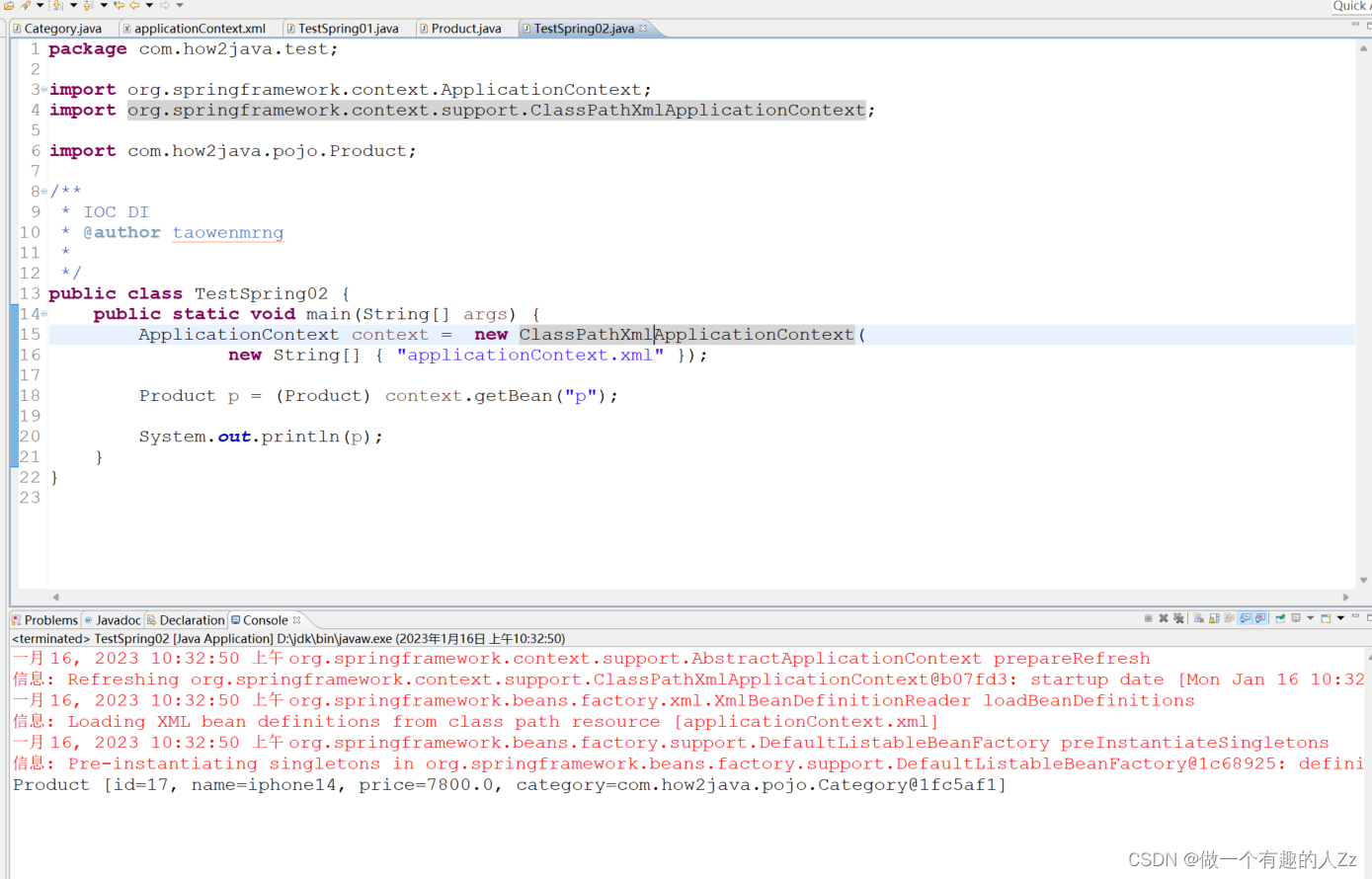1、Spring框架介绍
(1)介绍
Spring是一个基于IOC和AOP的结构J2EE系统的框架
(2)什么是IOC
IOC 反转控制 是Spring的基础,Inversion Of Control
简单说就是创建对象由以前的程序员自己new 构造方法来调用,变成了交由Spring创建对象。
(3)什么是DI
DI 依赖注入 Dependency Inject. 简单地说就是拿到的对象的属性,已经被注入好相关值了,直接使用即可。
(4)什么是AOP
AOP 即 Aspect Oriented Program 面向切面编程。
首先,在面向切面编程的思想里面,把功能分为核心业务功能,和周边功能。
所谓的核心业务,比如登陆,增加数据,删除数据都叫核心业务
所谓的周边功能,比如性能统计,日志,事务管理等等。
周边功能在Spring的面向切面编程AOP思想里,即被定义为切面。
在面向切面编程AOP的思想里面,核心业务功能和切面功能分别独立进行开发
然后把切面功能和核心业务功能 “编织” 在一起,这就叫AOP。
2、Spring框架案例实现步骤
(1)新建 java project类型的项目
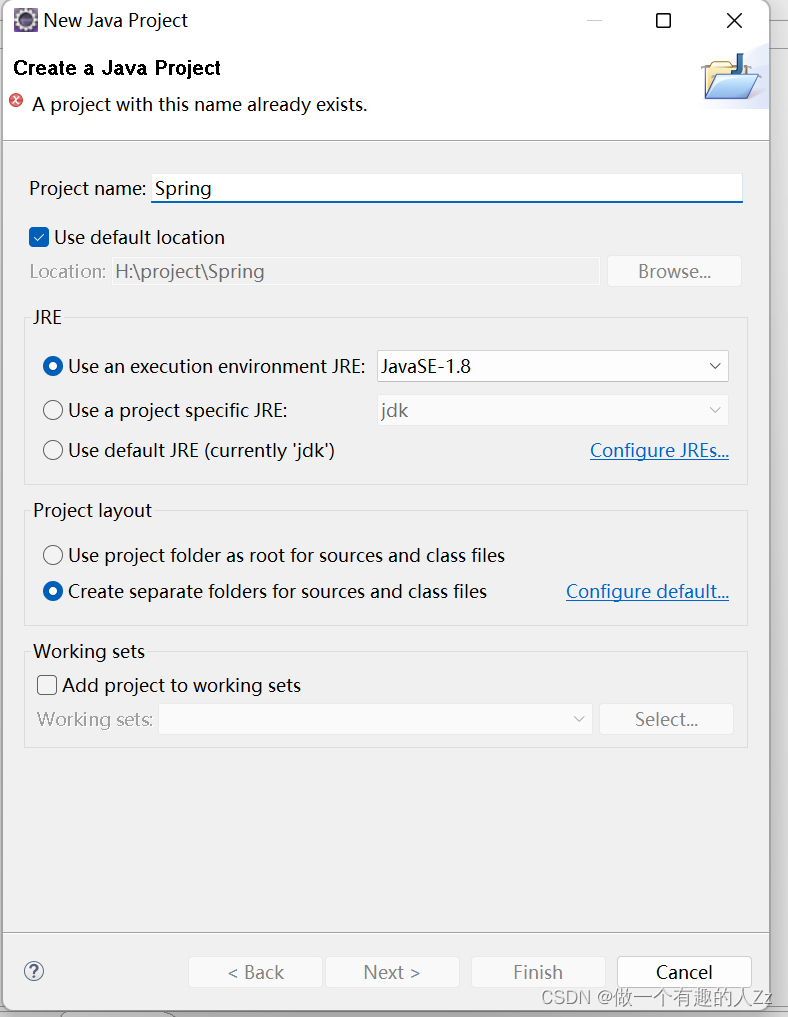
(2)下载依赖包并导入
链接:https://pan.baidu.com/s/1EQJ9-9AjgQ39TP1XRauVcw?pwd=t7le
提取码:t7le
把jar包导入到项目中,导包办法:右键 project->properties->java build path->libaries->add external jars
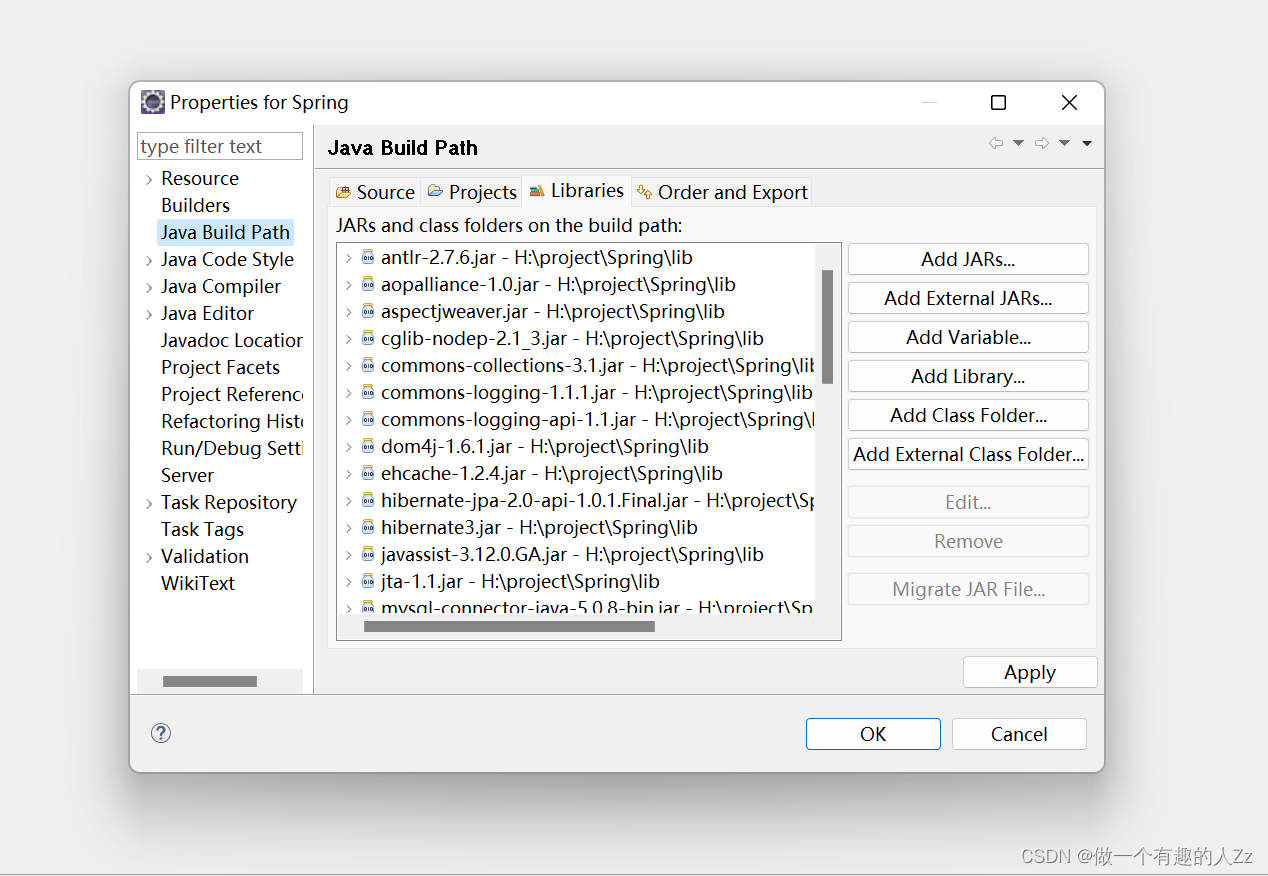
(3)pojo
package com.how2java.pojo;
public class Category {
public int getId() {
return id;
}
public void setId(int id) {
this.id = id;
}
public String getName() {
return name;
}
public void setName(String name) {
this.name = name;
}
private int id;
private String name;
}
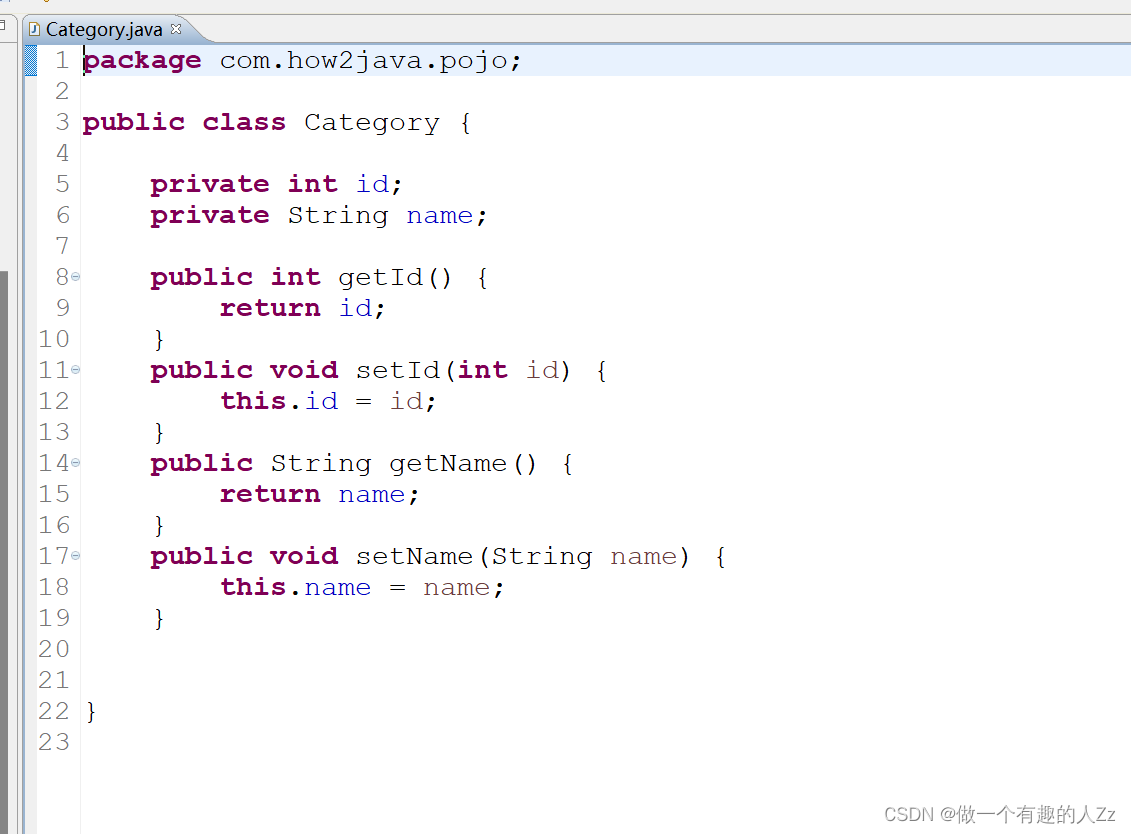
(4)applicationContext.xml
在src目录下新建applicationContext.xml文件
applicationContext.xml是Spring的核心配置文件,通过关键字c即可获取Category对象,该对象获取的时候,即被注入了字符串"category 1“到name属性中
<?xml version="1.0" encoding="UTF-8"?>
<beans xmlns="http://www.springframework.org/schema/beans"
xmlns:xsi="http://www.w3.org/2001/XMLSchema-instance"
xmlns:aop="http://www.springframework.org/schema/aop"
xmlns:tx="http://www.springframework.org/schema/tx"
xmlns:context="http://www.springframework.org/schema/context"
xsi:schemaLocation="
http://www.springframework.org/schema/beans
http://www.springframework.org/schema/beans/spring-beans-3.0.xsd
http://www.springframework.org/schema/aop
http://www.springframework.org/schema/aop/spring-aop-3.0.xsd
http://www.springframework.org/schema/tx
http://www.springframework.org/schema/tx/spring-tx-3.0.xsd
http://www.springframework.org/schema/context
http://www.springframework.org/schema/context/spring-context-3.0.xsd">
<bean name="c" class="com.how2java.pojo.Category">
<property name="name" value="category 1" />
</bean>
</beans>
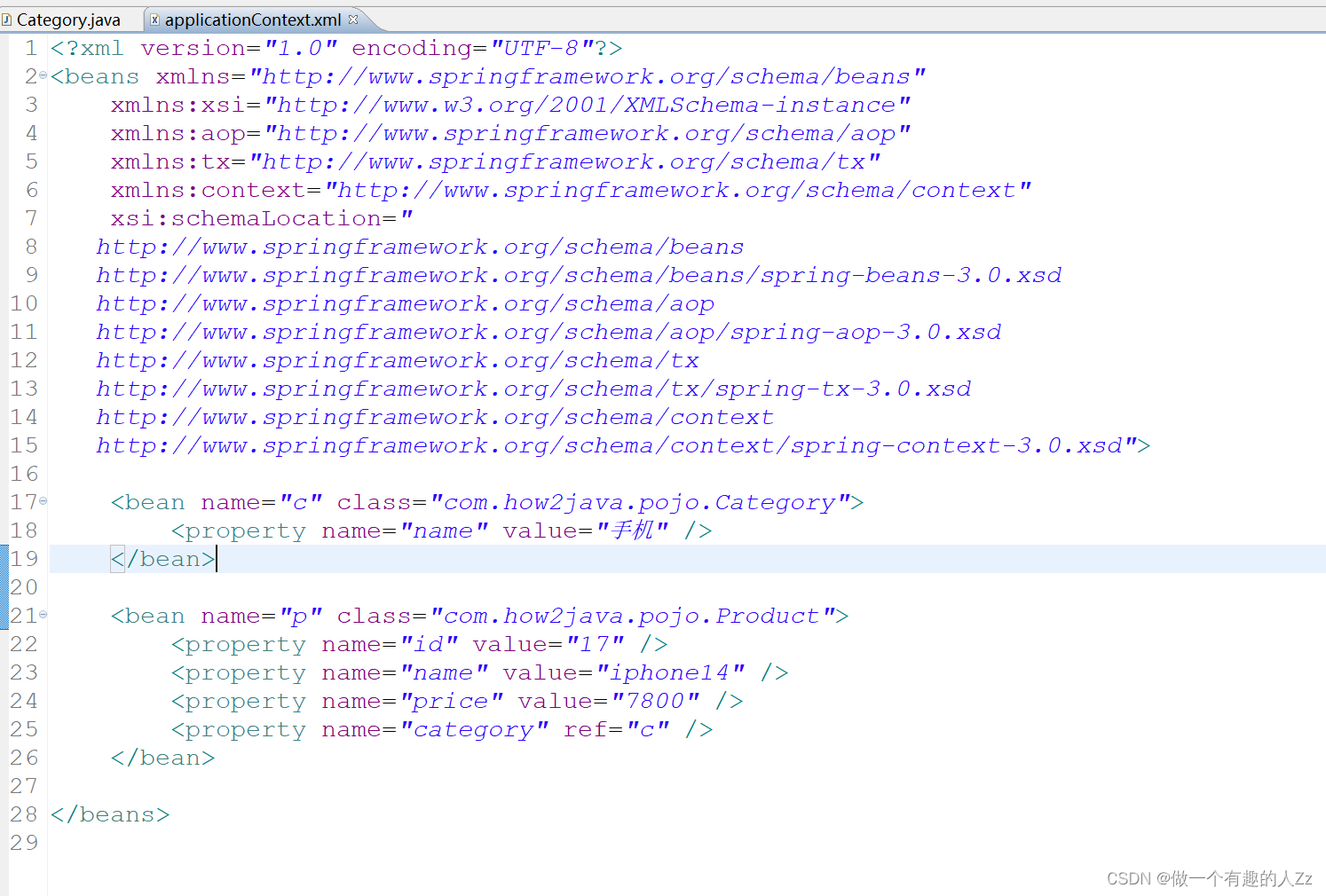
(5)测试
测试代码,演示通过spring获取Category对象,以及该对象被注入的name属性。
如图所示,可以打印出通过Spring拿到的Category对象的name属性
package com.how2java.test;
import org.springframework.context.ApplicationContext;
import org.springframework.context.support.ClassPathXmlApplicationContext;
import com.how2java.pojo.Category;
public class TestSpring {
public static void main(String[] args) {
ApplicationContext context = new ClassPathXmlApplicationContext(
new String[] { "applicationContext.xml" });
Category c = (Category) context.getBean("c");
System.out.println(c.getName());
}
}
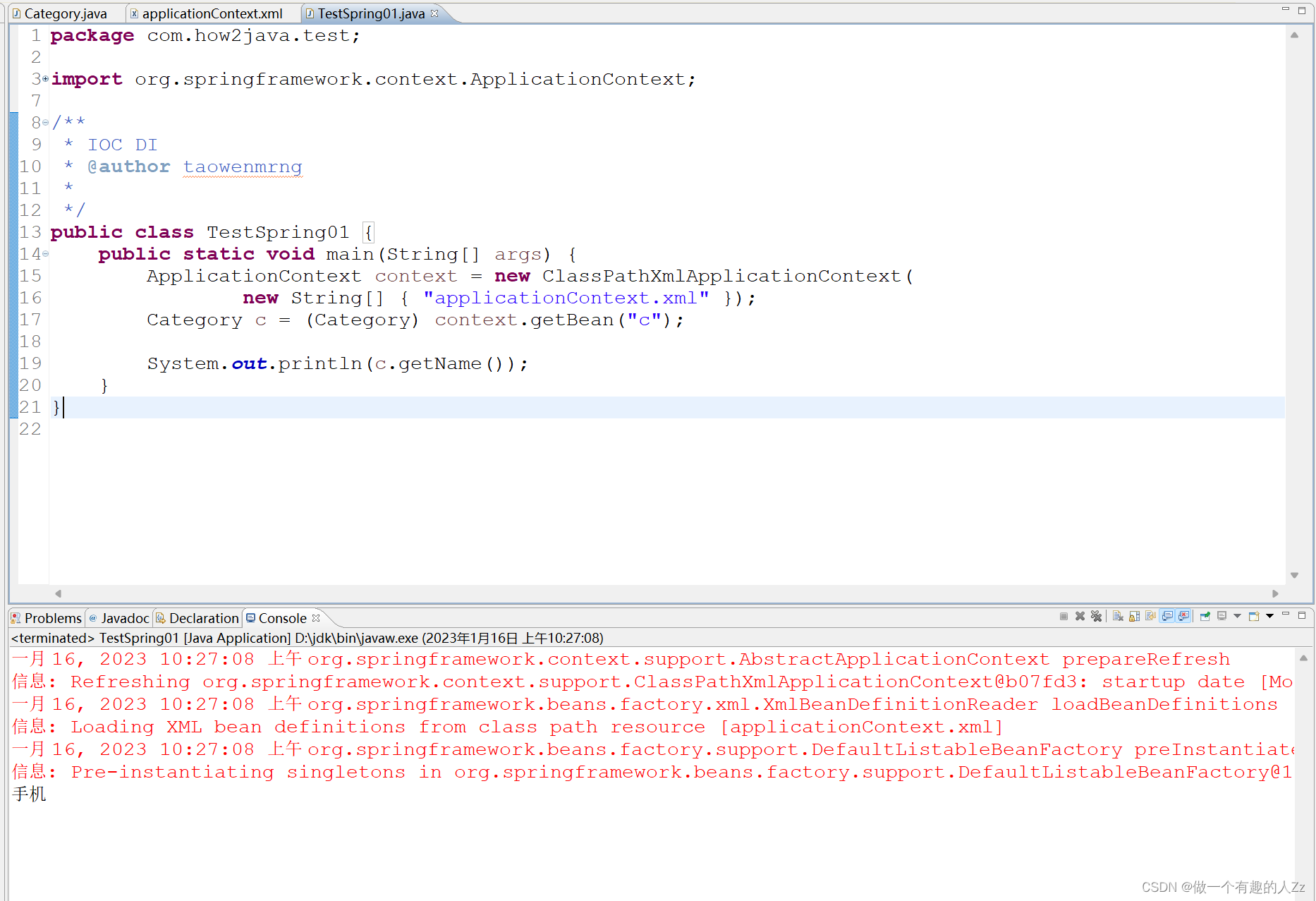
3、原理
以获取对象的方式来进行比较
传统的方式:
通过new 关键字主动创建一个对象
IOC方式
对象的生命周期由Spring来管理,直接从Spring那里去获取一个对象。 IOC是反转控制 (Inversion Of Control)的缩写,就像控制权从本来在自己手里,交给了Spring。
打个比喻:
传统方式:相当于你自己去菜市场new 了一只鸡,不过是生鸡,要自己拔毛,去内脏,再上花椒,酱油,烤制,经过各种工序之后,才可以食用。
用 IOC:相当于去馆子(Spring)点了一只鸡,交到你手上的时候,已经五味俱全,你就只管吃就行了。
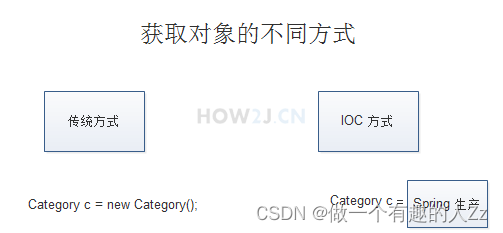
4、练习
使用IOC的方式,获取一个Product对象。
(1)Product
package com.how2java.pojo;
public class Product {
private int id;
private String name;
private double price;
private Category category;
public Category getCategory() {
return category;
}
public void setCategory(Category category) {
this.category = category;
}
public int getId() {
return id;
}
public void setId(int id) {
this.id = id;
}
public String getName() {
return name;
}
public void setName(String name) {
this.name = name;
}
public double getPrice() {
return price;
}
public void setPrice(double price) {
this.price = price;
}
@Override
public String toString() {
return "Product [id=" + id + ", name=" + name + ", price=" + price + ", category=" + category + "]";
}
}
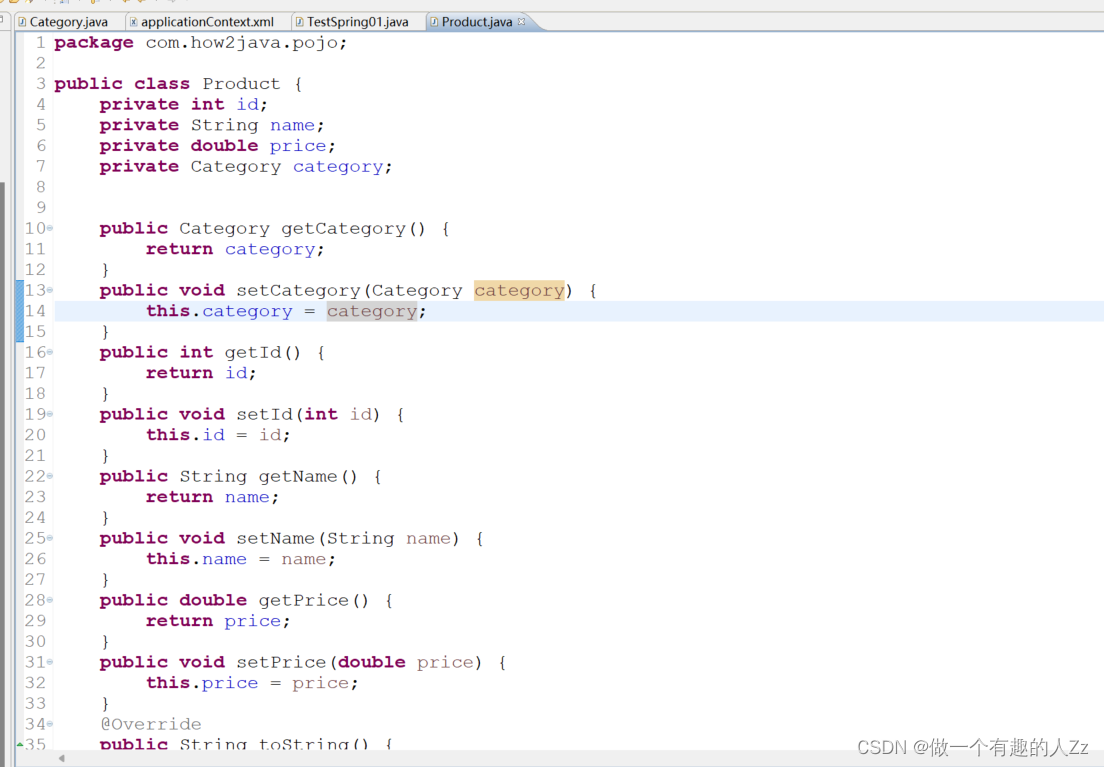
(2)applicationContext.xml
新增内容
<?xml version="1.0" encoding="UTF-8"?>
<beans xmlns="http://www.springframework.org/schema/beans"
xmlns:xsi="http://www.w3.org/2001/XMLSchema-instance"
xmlns:aop="http://www.springframework.org/schema/aop"
xmlns:tx="http://www.springframework.org/schema/tx"
xmlns:context="http://www.springframework.org/schema/context"
xsi:schemaLocation="
http://www.springframework.org/schema/beans
http://www.springframework.org/schema/beans/spring-beans-3.0.xsd
http://www.springframework.org/schema/aop
http://www.springframework.org/schema/aop/spring-aop-3.0.xsd
http://www.springframework.org/schema/tx
http://www.springframework.org/schema/tx/spring-tx-3.0.xsd
http://www.springframework.org/schema/context
http://www.springframework.org/schema/context/spring-context-3.0.xsd">
<bean name="c" class="com.how2java.pojo.Category">
<property name="name" value="手机" />
</bean>
<bean name="p" class="com.how2java.pojo.Product">
<property name="id" value="17" />
<property name="name" value="iphone14" />
<property name="price" value="7800" />
<property name="category" ref="c" />
</bean>
</beans>
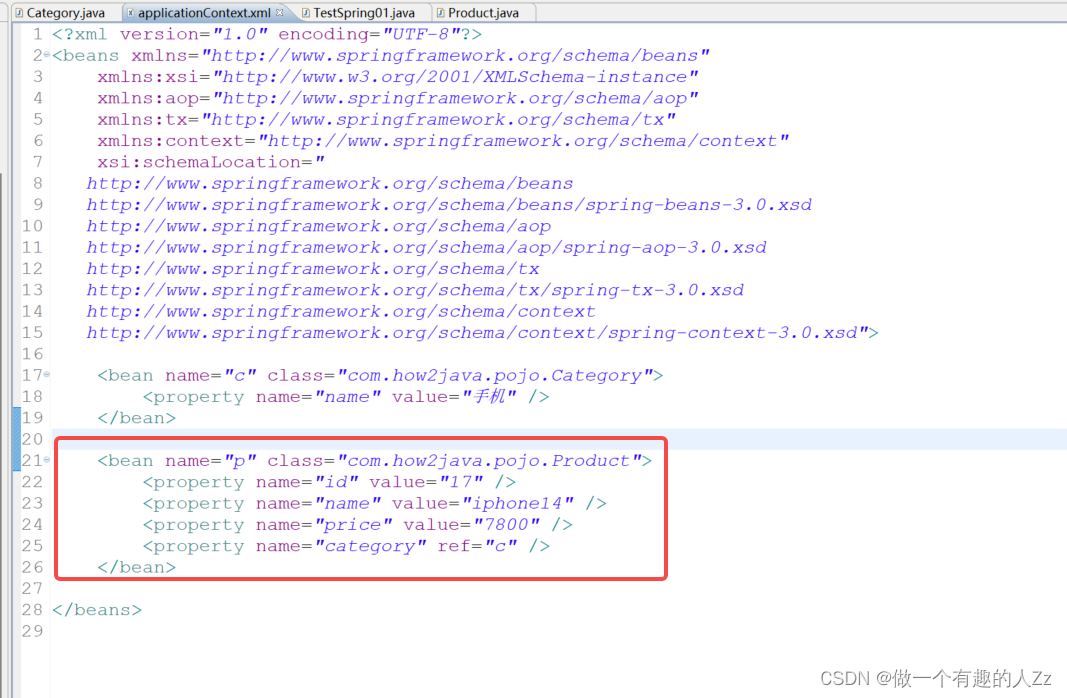
(3)测试TestSpring02
package com.how2java.test;
import org.springframework.context.ApplicationContext;
import org.springframework.context.support.ClassPathXmlApplicationContext;
import com.how2java.pojo.Product;
/**
* IOC DI
* @author taowenmrng
*
*/
public class TestSpring02 {
public static void main(String[] args) {
ApplicationContext context = new ClassPathXmlApplicationContext(
new String[] { "applicationContext.xml" });
Product p = (Product) context.getBean("p");
System.out.println(p);
}
}
